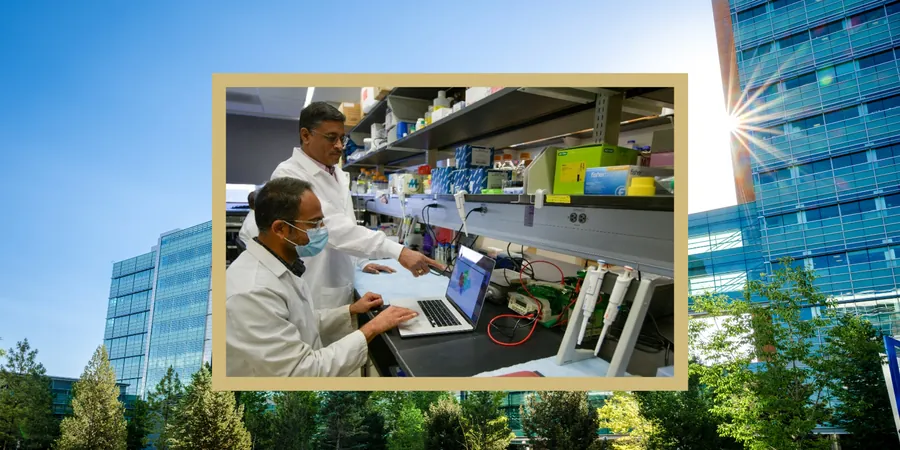
Major Breakthrough in Duchenne Muscular Dystrophy Research: How Protein Dynamics Could Revolutionize Treatments!
2024-12-31
Author: Li
Major Breakthrough in Duchenne Muscular Dystrophy Research: How Protein Dynamics Could Revolutionize Treatments!
In a stunning revelation, a new study has uncovered the intricate relationship between dystrophin—a crucial protein for muscle stability—and dystrobrevin, its essential partner. This research not only enhances our understanding of Duchenne Muscular Dystrophy (DMD) but opens new doors for targeted therapies that could significantly improve patient outcomes.
Published in the December edition of the Journal of Biological Chemistry, the study delved into the elusive C-terminal (CT) domain of dystrophin, illuminating its pivotal role in maintaining cellular membrane integrity across various tissues. DMD, a devastating genetic disorder, results from mutations in the dystrophin gene. While existing treatments can prolong the lives of patients, the exorbitant costs and limited effectiveness make it imperative to explore new therapeutic avenues.
“This research reveals the complex dynamics between dystrophin and dystrobrevin interactions, offering insights that could be vital in developing future treatments,” stated Krishna Mallela, a professor at the University of Colorado's Skaggs School of Pharmacy. Mallela, the lead author of the study, emphasized that understanding how these proteins operate differently in various tissues is essential for creating therapies that address the root causes of DMD.
Noteworthy findings from the study indicate that the CT domain of dystrophin interacts differently with the two major isoforms of dystrobrevin, which are essential for its function. The distinct amino acid compositions of these isoforms influence their binding affinities to dystrophin and the various interactions taking place. This protein dynamic is a significant factor affecting the stability of the dystrophin-associated protein complex, providing insights into the diverse symptoms experienced by DMD patients—ranging from muscle degeneration to complications in vital organs like the heart and brain.
“This discovery is a game changer for DMD treatment,” Mallela remarked. “Even though progress has been made in therapies, many of them were developed out of necessity rather than a solid understanding of the underlying mechanisms. Just as you wouldn't fix a car without knowing how its engine works, we must delve deeper into the molecular processes that drive this condition.”
Pioneered by postdoctoral researcher Vaibhav Upadhyay in Mallela's lab, this groundbreaking research has garnered praise for its potential to influence future therapeutic interventions significantly. It highlights the necessity for an informed approach to treatment development, which could lead to more effective and targeted therapies for individuals afflicted by DMD.
Stay tuned for more updates on this exciting research, as it could pave the way for breakthroughs that change the lives of countless DMD patients worldwide!





 Brasil (PT)
Brasil (PT)
 Canada (EN)
Canada (EN)
 Chile (ES)
Chile (ES)
 Česko (CS)
Česko (CS)
 대한민국 (KO)
대한민국 (KO)
 España (ES)
España (ES)
 France (FR)
France (FR)
 Hong Kong (EN)
Hong Kong (EN)
 Italia (IT)
Italia (IT)
 日本 (JA)
日本 (JA)
 Magyarország (HU)
Magyarország (HU)
 Norge (NO)
Norge (NO)
 Polska (PL)
Polska (PL)
 Schweiz (DE)
Schweiz (DE)
 Singapore (EN)
Singapore (EN)
 Sverige (SV)
Sverige (SV)
 Suomi (FI)
Suomi (FI)
 Türkiye (TR)
Türkiye (TR)
 الإمارات العربية المتحدة (AR)
الإمارات العربية المتحدة (AR)